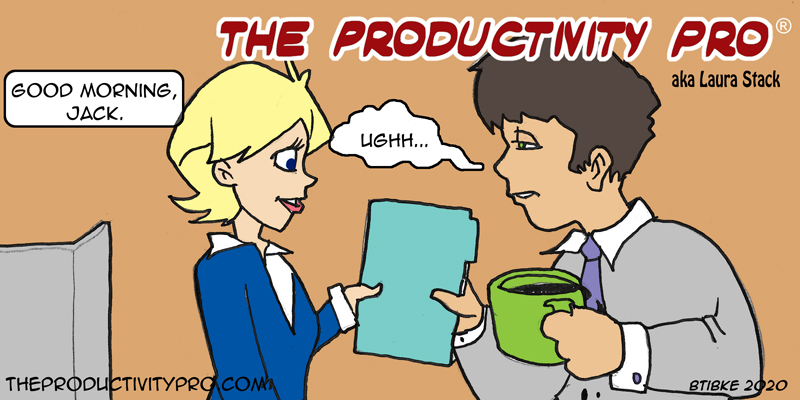
“The energy of the mind is the essence of life.” – Aristotle, ancient Greek philosopher.
It’s not quite a buzzword yet, but one term that’s recently gained traction in business circles is “chronotype.” As the name indicates, it has to do with time — specifically, the time of day a particular worker feels at their best in terms of physical energy. Dr. Michael Breus made the term popular in his 2016 book The Power of When. Breus defines four basic chronotypes: bear, wolf, lion, and dolphin. Frankly, there’s not a huge difference between the recommended wake/sleep times for Breus’s chronotypes, though he does pinpoint the times when each peaks during the day.
Meanwhile, the rest of us have lived for years with awareness of two basic types of workers: larks and night owls. Larks (most of us) do best in the morning, hitting their energy peaks before mid-afternoon. Night owls do best later in the day, and if given their druthers, might just stay awake all night.
Rather than attach yet another label to yourself, I feel it’s better just to determine when you feel the strongest, most energetic, and the most clear-headed, and keep tabs on when it occurs time-wise, so you can take advantage of that at work. Here are some simple ways to handle and maximize that process.
- Determine when you normally hit your energy peaks. No one knows you as well as you do, so take some time to reflect on when you usually feel best and most productive during the day. If it’s not immediately clear, then keep a journal of your energy peaks and valleys for at least two weeks. Your chronotype should then become obvious. If you want to follow one of the established chronotype systems, that’s fine. But you don’t need to, as long as you know your personal peak times—and how to take advantage of them.
- Arrange your day around your peaks. Rather than trying to “eat the frog” first thing in the morning when you know your energy peaks occur at ten and two, do lower-priority tasks during these periods. This is a bit heretical, given the widespread assumption that everyone functions best in the morning; but if it’s right for you, do it. Similarly, schedule important meetings and presentations for your peak times whenever possible.
- Take advantage of caffeine. Yes, I know caffeine has its negative effects, but it also has positive effects, such as alertness and increased performance. As long as you keep hydrated by drinking more water than caffeinated beverages, you can reap its eye-opening stimulation not just to get you through your low-energy periods, but also to maximize your productivity during your peaks. Just stop drinking it in the afternoon, or it can affect your sleep.
- Arrange meals and snacks to heighten your productivity. Your brain runs on pure glucose, like it or not. So as long as you take small meals and can shake off any sleepiness effects, then if possible, eat about half an hour before a natural energy peak to heighten the high. This may also help you stay sharper and more productive.
- Take breaks during your energy valleys. Once you become aware of your peaks and valleys, schedule your breaks for times when you wouldn’t get much done anyway. It would be a terrible waste to schedule a break during an energy peak, after all.
- Work flex time. If your office allows you a flexible work schedule, take advantage of it if and only if you think it will make you more productive. Ten-to-seven may work better for you than eight-to-five.
Remember, one size never fits all. Humans circadian rhythms don’t always match up the normal day-night cycle, possibly because technology has freed us from the tyranny of sunlight in the past few thousand years. In any case, some of us feel no natural affinity with the “get-up-early” paradigm the rest of the world follows. Some just feel better in the afternoons or evenings, while others peak at mid-morning rather than first thing. The rest can actually follow the old “swallow the frog first” advice with no problem immediately after they get in. In the end, it doesn’t matter, as long as you are able to work around it at the office. Make a serious effort you follow Shakespeare’s advice to “know thyself,” you can determine what time of day to put in your greatest effort—and when you should just hold off until your energy kicks in.
© 2020 Laura Stack. Laura Stack, MBA, CSP, CPAE is an award-winning keynote speaker, bestselling author, and noted authority on employee and team productivity. She is the president of The Productivity Pro, Inc., a company dedicated to helping leaders increase workplace performance in high-stress environments. Stack has authored eight books, including FASTER TOGETHER: Accelerating Your Team’s Productivity (Berrett-Koehler 2018). She is a past president of the National Speakers Association, and a member of its exclusive Speaker Hall of Fame (with fewer than 175 members worldwide). Stack’s clients include Cisco Systems, Wal-Mart, and Bank of America, and she has been featured on the CBS Early Show and CNN, and in the New York Times. To have Laura Stack speak at an upcoming meeting or event, call 303-471-7401 or contact us online.


